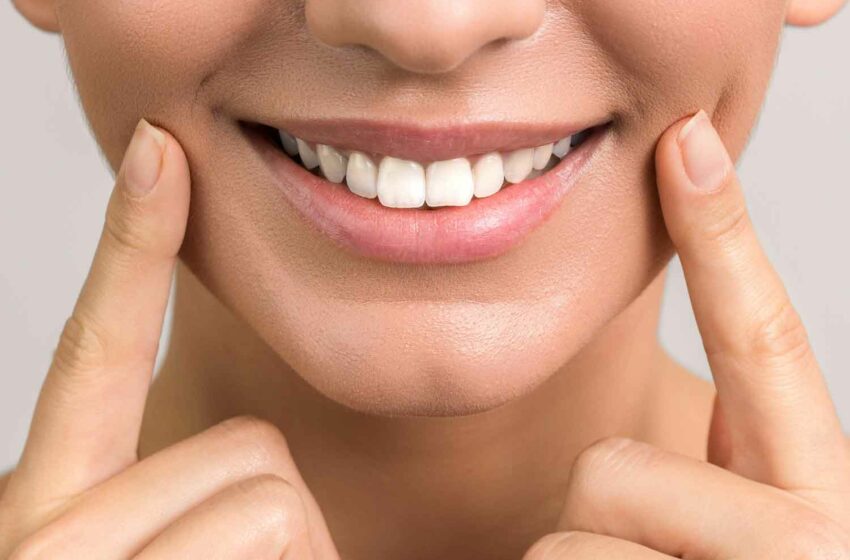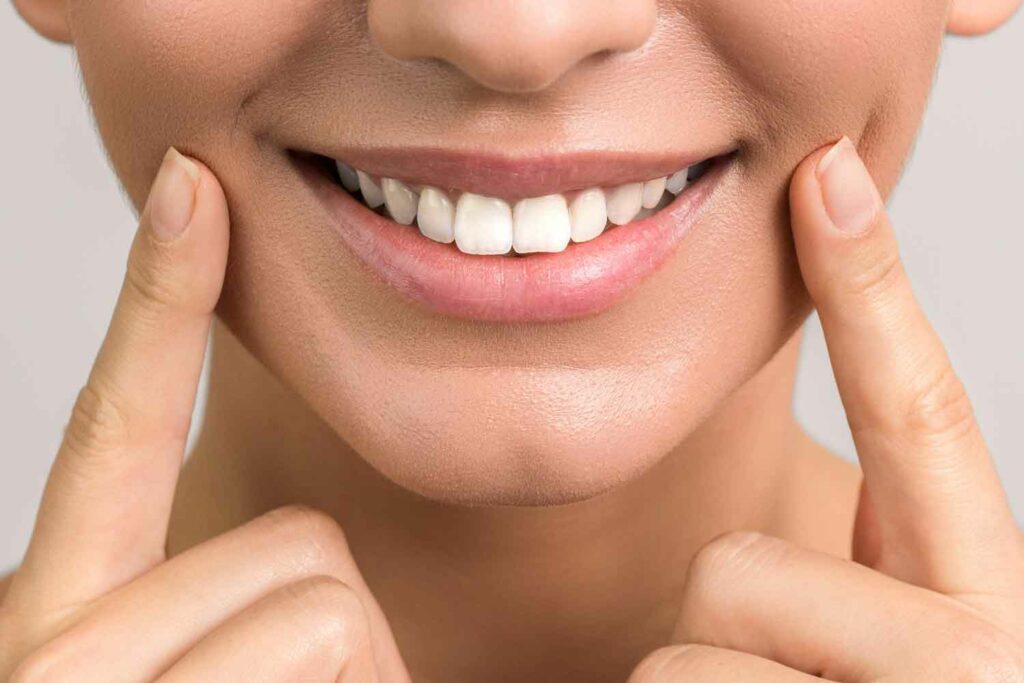Something to Smile About
- Also in TR Harm Reduction Print Edition
- August 1, 2024
- 0
- 10 minutes read

The CoEHAR is studying the impact of reduced-risk products on oral health.

By Stefanie Rossel

In the context of smoking-related issues, oral health has long been neglected. According to Riccardo Polosa, founder of the Center of Excellence for the acceleration of Harm Reduction (CoEHAR) in Italy, this can be explained by several factors. “Smoking is primarily linked to fatal systemic conditions such as cancer, heart disease and respiratory problems, which tend to overshadow its effects on oral health,” he says.
In addition, until recently, dentists were less aware of the detrimental impact of smoking on oral health, particularly in managing gum disease, tooth loss and dental implant procedures. What’s more, because oral health is influenced by multiple factors, including diet, oral hygiene practices and genetic predispositions, it is difficult to isolate smoking as a culprit.
“Dentists have historically been hesitant to invest their professional efforts in helping clients quit smoking,” Polosa says. “However, there is now an increasing recognition among dental professionals of the significant benefits of smoking cessation in improving treatment outcomes, and more and more dentists are increasingly promoting smoking cessation strategies and advocating for the use of tar-free nicotine products.”
To investigate changes in oral health parameters and dental aesthetics in smokers who switch to tar-free nicotine products, the CoEHAR earlier this year launched the SMILE study with funding from the Foundation for a Smoke-Free World (FSFW), which recently rebranded as Global Action to End Smoking. Polosa says the study is the first and only of its kind, as it aims to measure risk reduction, harm reversal and smoking cessation combined, which sets it apart from other trials that focus solely on cessation.
Geographically Diverse Approach
The international, randomized controlled trial involves 474 participants in four countries—153 in Catania (Italy), 45 in Warsaw (Poland), 168 in Chisinau (Moldova) and 108 in Bandung (Indonesia). The decision to focus on these countries was based on strategic and practical considerations, Polosa explains. “Mandated by the FSFW’s mission, the selection of low[-income] and middle-income countries was crucial to facilitate the dissemination of high-quality tobacco harm reduction [THR] science through collaborative partnerships and knowledge exchange,” he says. “Additionally, factors such as low operational costs and strong interest in participating in the study were significant in their inclusion. Italy was specifically chosen to take a leadership role in training and coordination within the study.”
All four countries have high smoking rates, providing a substantial pool of participants for studying smoking cessation and switching behaviors. “The selection of these countries enables the SMILE study to capture a broad spectrum of socioeconomic, healthcare and cultural factors that influence smoking behavior and the adoption of THR,” says Polosa. Each country represents a distinct healthcare system, ranging from well-established systems in Italy and Poland to less developed systems in Moldova and Indonesia. This diversity enhances the study’s relevance and generalizability on a global scale.”
Indonesia presents a unique case due to its widespread use of clove cigarettes, which account for nearly 90 percent of the Indonesian cigarette market. “Studying THR in a context where very popular traditional tobacco products dominate can offer valuable insights into cultural attitudes toward smoking cessation and alternative nicotine-delivery systems,” says Polosa. “Smoke from clove cigarettes contains high particulate matter and toxicants, making them as harmful as conventional tobacco cigarettes. Therefore, THR is strongly needed in Indonesia, with advocacy and education being key to successful implementation.”

State-of-the-Art Technologies
For their study, the SMILE researchers recruited cigarette smokers interested in switching to alternative products. The participants were randomly allocated to receive either standard care, including cessation counseling (i.e., “very brief advice”), or the nicotine product of their choice plus very brief advice. The trial also includes a reference group of individuals who had never smoked. The researchers then recorded participants’ cigarette consumption and tar-free nicotine product at every visit. Additionally, participants were asked to return all empty, partly used and unused consumables. Throughout the study, the researchers monitored smoking and tar-free nicotine product use via a tracker app.
“The SMILE tracker app is an integral component of the SMILE study, designed to monitor participants’ behaviors and lifestyle choices. Through daily prompts, the app assists in tracking cigarette consumption, the use of nicotine products, and regular oral hygiene practices such as brushing, flossing and mouthwash use. Although personal oral hygiene practices were carefully tracked, there was no emphasis on oral hygiene education or management of dietary patterns,” says Polosa.
“A standardized approach was implemented to mitigate the effect of these potential confounders on both primary and secondary study endpoints,” he continues. “Participants were explicitly advised to continue their established oral hygiene practices for the entire duration of the study. Furthermore, adherence to specific restriction criteria before each scheduled study visit was emphasized to prevent any confounding of the collected data.”
To prevent confounding factors, oral hygienists removed plaque, calculus and stain from the study participants’ teeth 14 days prior to baseline measurements. “This critical element is absent in most clinical trials,” says Polosa.
Chronic periodontal disease is common in smokers that is unlikely to improve with cessation alone, according to Polosa. “Therefore, participants with periodontitis have been excluded, and only participants with mild to moderate gingivitis have been recruited, as they are more likely to maximize the impact of the intervention.”
The researchers use state-of-the-art technologies, such as spectrophotometers and quantitative light-induced fluorescence scanners, to quantify tooth discoloration and the amount of dental plaque.
“These study endpoints measure important patient factors that may drive behavior change,” says Polosa. “This is particularly persuasive for young adults, for whom a cardiovascular-cancer-respiratory risk-based narrative is either ineffective or counterproductive and for whom concern about bad breath and poor dental aesthetics due to enamel discoloration and ‘tar’ stains may be a much more significant reason to stop smoking.”
The Importance of Aesthetics
The SMILE study allows volunteers to choose their own type of tar-free nicotine product, says Polosa. “This personalized choice is likely to enhance adherence, retention, and optimize compliance, thus maximizing cessation of tobacco cigarettes,” he explains. “This unique approach also generates results that are not product-specific and therefore more generalizable and realistic for implementing such a strategy in the real world.”
According to Polosa, the researchers enroll only those who would not otherwise commit to a smoking cessation counseling program but are prepared to choose from smoking alternatives such as e-cigarettes and tobacco-heating products. The study has been designed to allow participants to tailor their own “nicotine experience” by selecting the tar-free nicotine product that aligns most with their preferences, thereby maximizing the transition away from tobacco smoking and reducing the likelihood of relapse.
The study is not designed to coerce participants to avoid tobacco smoking completely, he says. Dual use is not prevented; therefore, the sample size has been oversampled to ensure that enough exclusive users of tar-free nicotine products by the end of the study are included.
“The SMILE study also provides a unique opportunity to evaluate the impact on oral health and dental aesthetics among individuals who simultaneously smoke conventional cigarettes and use tar-free nicotine products,” says Polosa. “Different dual-use patterns exist—e.g., strong switchers versus light switchers—and are likely to have varying impacts on overall oral health. We expect to observe progressive changes with different patterns of dual use.”
Perhaps the most interesting aspect of the SMILE study is its inclusion of aesthetics. Polosa says that stained teeth and tobacco odors are a growing concern, especially among young smokers, who demand not only healthy mouths but good-looking smiles.
“Everyone wants to have a perfect dentition, as it helps in interpersonal contacts and raises value in the job market,” he says. “In our social media-driven age, vanity plays a significant role in influencing behavior. The desire for an attractive appearance, including a bright smile, is often a powerful motivator, especially among younger demographics who are highly engaged with social media platforms.”
Evidence from literature demonstrates that using images of damaged and tar-riddled lungs does not act as an effective deterrent to smoking, he says. “This is partly because people do not respond well to negative messaging and because they do not identify such images with their own bodies. The focus on aesthetics—rather than vanity—is important because we are conveying a positive outcome message for smoking cessation, leveraging the explosion in social media posts of happy, healthy people with bright smiles.”
Appealing to individuals’ desire to present themselves well and feel confident not only acknowledges the importance of aesthetics but also offers practical solutions for oral healthcare practitioners, such as aesthetic-enhancing alternative nicotine products for those who may struggle to quit smoking, according to Polosa. “The goal here is to harness today’s emphasis on appearance to encourage healthier behavior,” he says. “I predict that the argument for better aesthetics and oral health will become a more prominent and effective tool in smoking cessation efforts.”
The study’s results are expected in 2025. Polosa and his team anticipate observing better gingival/gum conditions, improved tooth color and reduced dental plaque accumulation in smokers who stop smoking after switching to alternative tar-free nicotine products.

